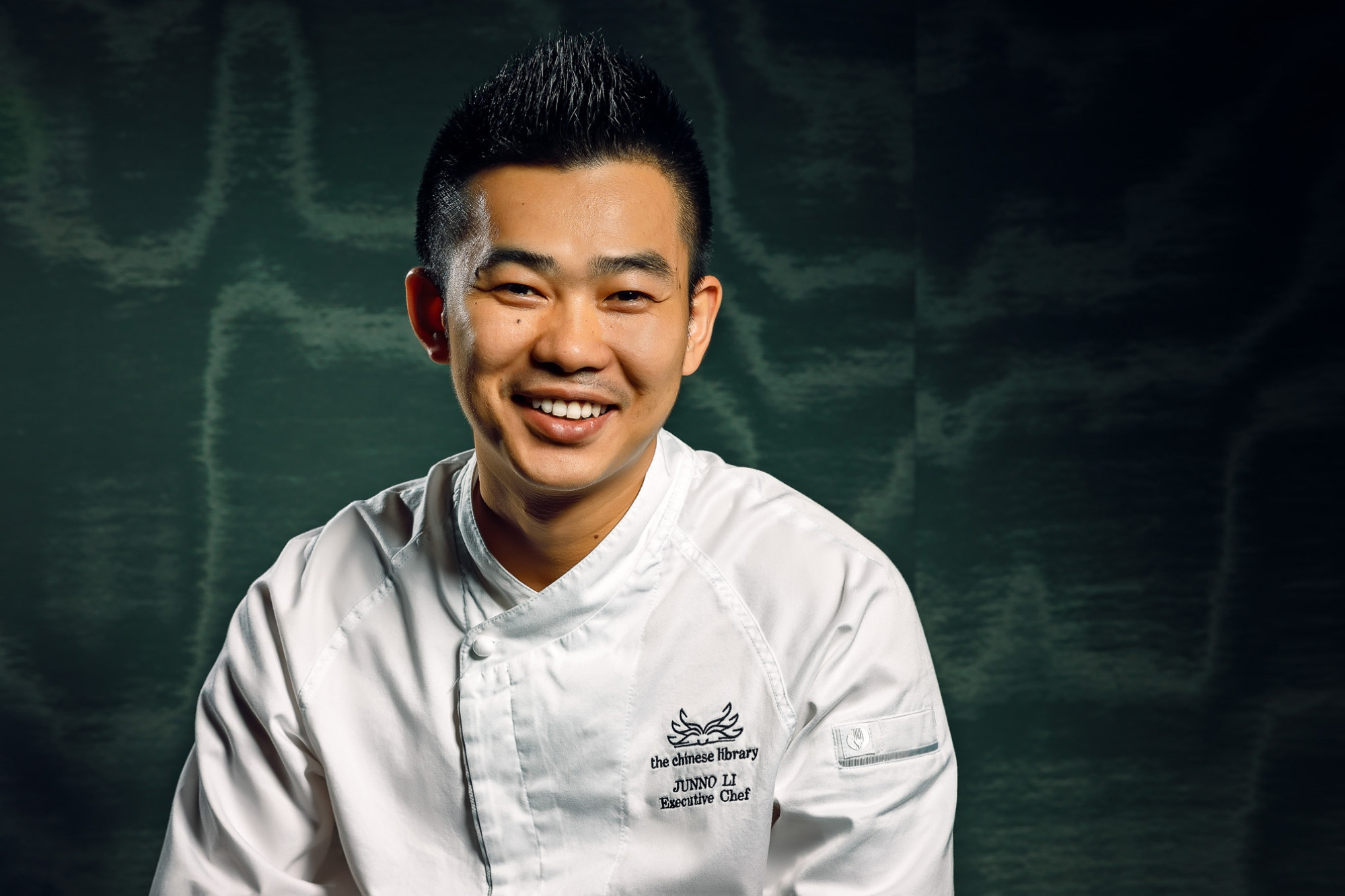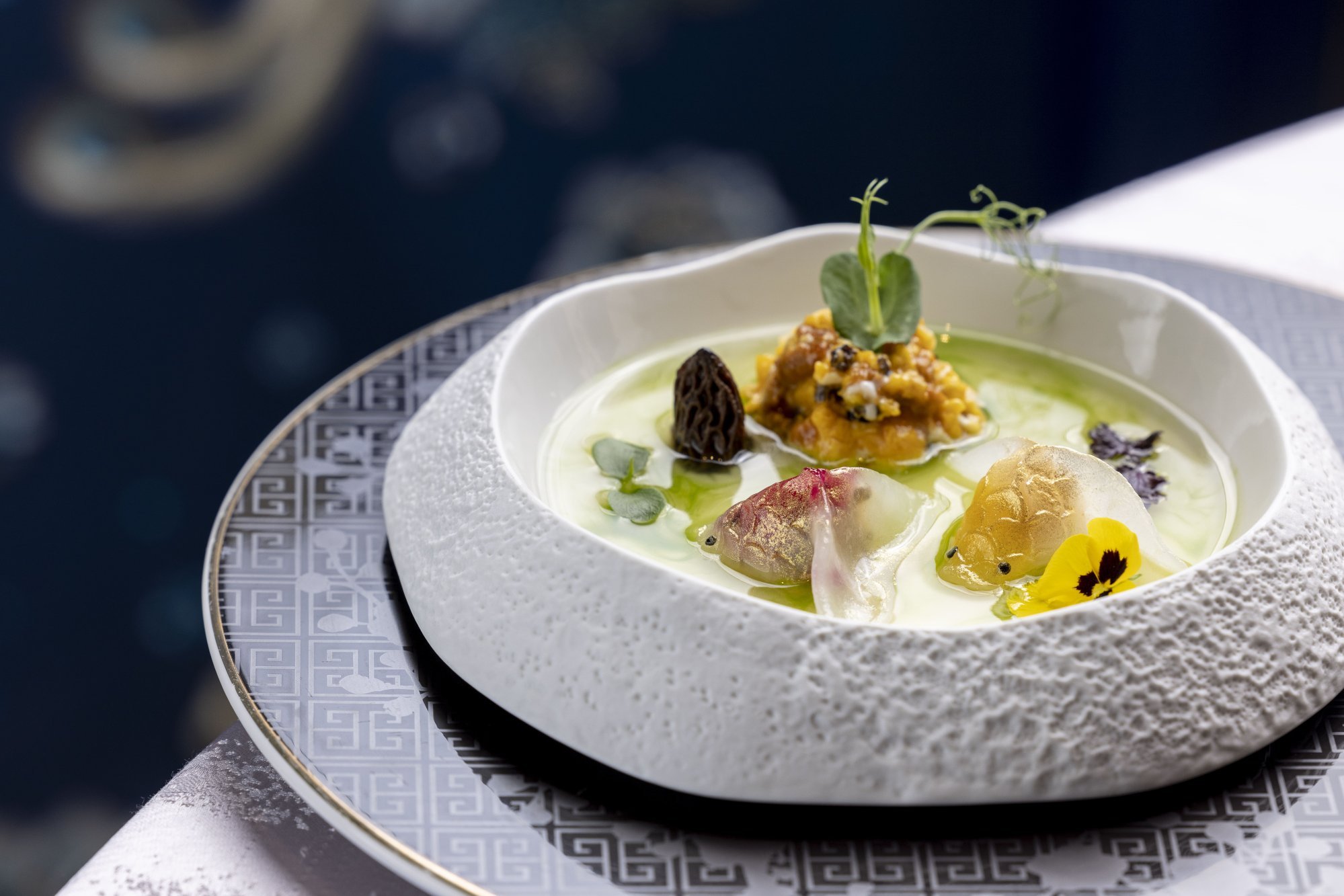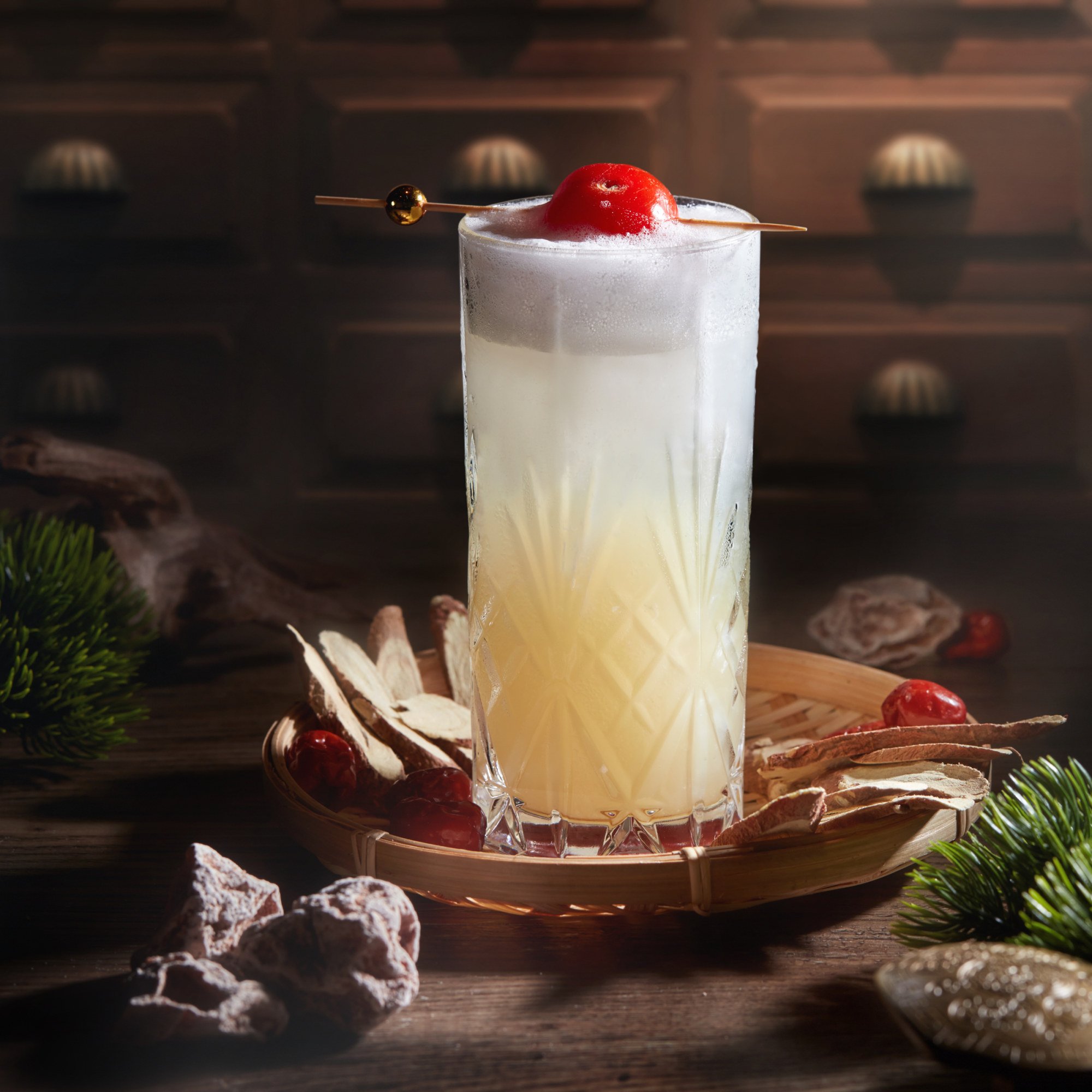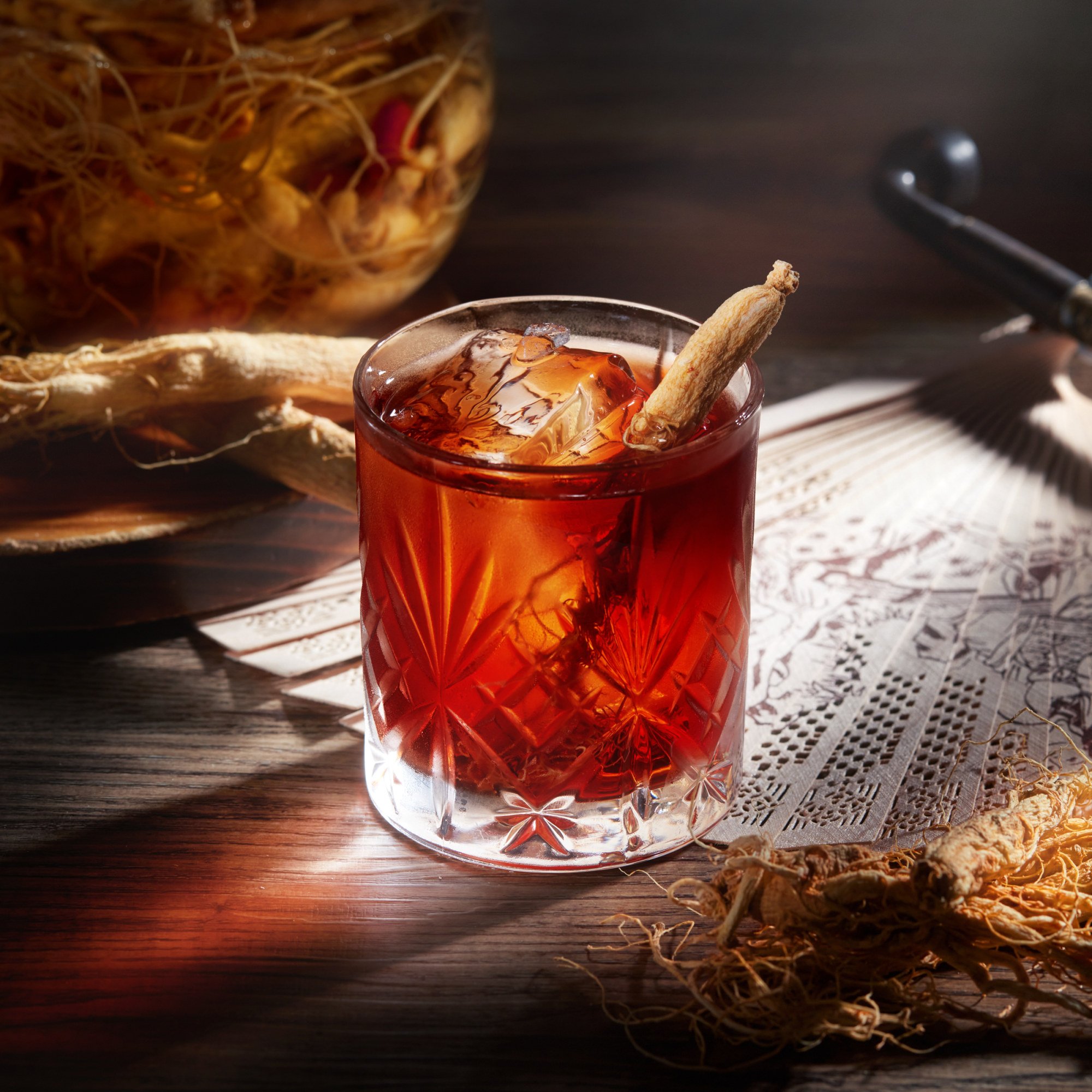“It was indeed a bold idea,” he says, “but you never know whether it will work without trying.
“In the first few attempts, there was no apple. We added it because foie gras is a strong ingredient.
“We tried many ways to counter the fattiness. We tried many kinds of vegetables. But all of them were overpowered by the foie gras.
Apple is a little acidic and quite juicy. It’s very important to make the dim sum lighter.”

Li got the idea for the Wagyu beef pastry from a dish in Yunnan, southwest China.
“In Yunnan, there is niu gan ba, a kind of cured and air-dried beef. So we took this smoky element and added it to the dish, as well as black pepper and butter,” Li says. “I believe tasting smokiness in a dim sum is quite a new experience for diners.”
Niu gan ba is a common way for Yunnan people to preserve meat. The Hui people of the province select high-quality cuts of beef, including meat from the hind legs, and rub them with salt, pepper and spices to preserve it. It can be found in dishes served in most restaurants in Yunnan.
Li selected Wagyu beef for this dim sum to give a cleaner bite, and added butter to enhance the fatty flavour and to bind the meat to the flaky pastry shell.

His dish of lobster meat, sea urchin and mini goldfish-shaped dumplings lined with steamed egg looks like a Chinese ink painting of two goldfish in a rock pool. The dish is served steaming hot and the steamed egg acts as a palate cleanser.
At The Chinese Library, Li has created a dish similarly inspired by the sea, featuring squid dumplings and seaweed. Li uses a pungent ingredient, dried octopus, to give it a briny flavour reminiscent of the sea.
“The dish is presented like a scene at the ocean. It’s even more fun when kids are eating this. If you shake it a little bit, the squid and the seaweed will move … kind of like an animation,” Li says.

One of them is a combination of licorice-infused gin, home-made preserved plum liquor, Lillet Blanc wine and tonic water.
“This pairs perfectly with crispy and flaky dim sum dishes, like our roast goose pastry, Iberico char siu pastry and egg tart,” Tsang says. “The cocktail eases the greasiness but also lifts the flavours of the dishes.”
When paired with the Iberico char siu pastry, the soapiness of the licorice counters the fattiness of the pastry without masking the char siu.

“We need to make sure the cocktail pairing really works, as there is such a vast variety of dim sum. We need to taste different types of dim sum and work with our chefs,” the bartender adds.
“We can’t just randomly pair the dishes with classic cocktails – the flavours may clash, or the cocktail could be too strong or too sour.”
Whether in flavour, presentation or the drink they are served with, these dim sum custodians take the delicacies to a whole new level – one attained through an incredible amount of work.







